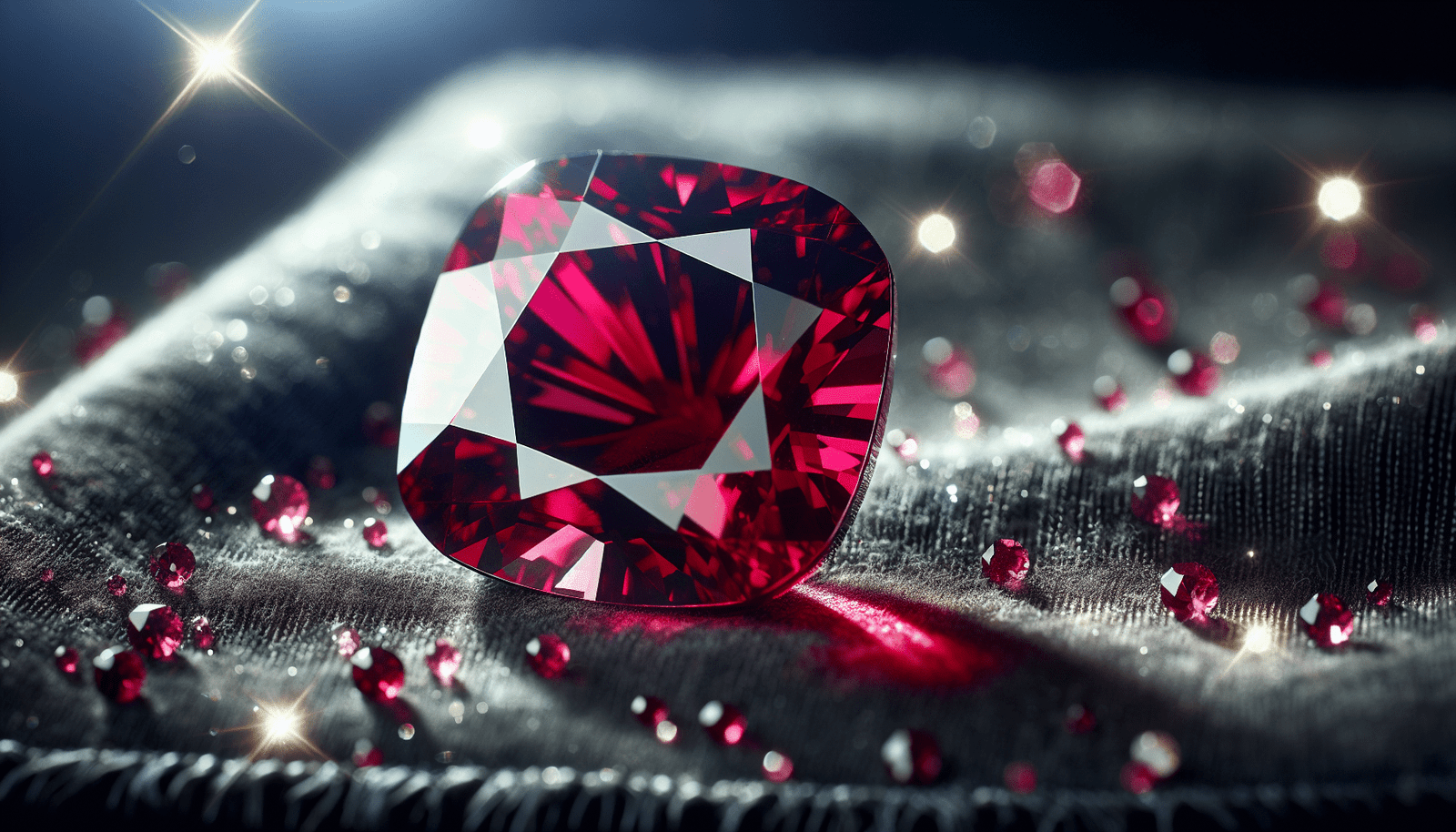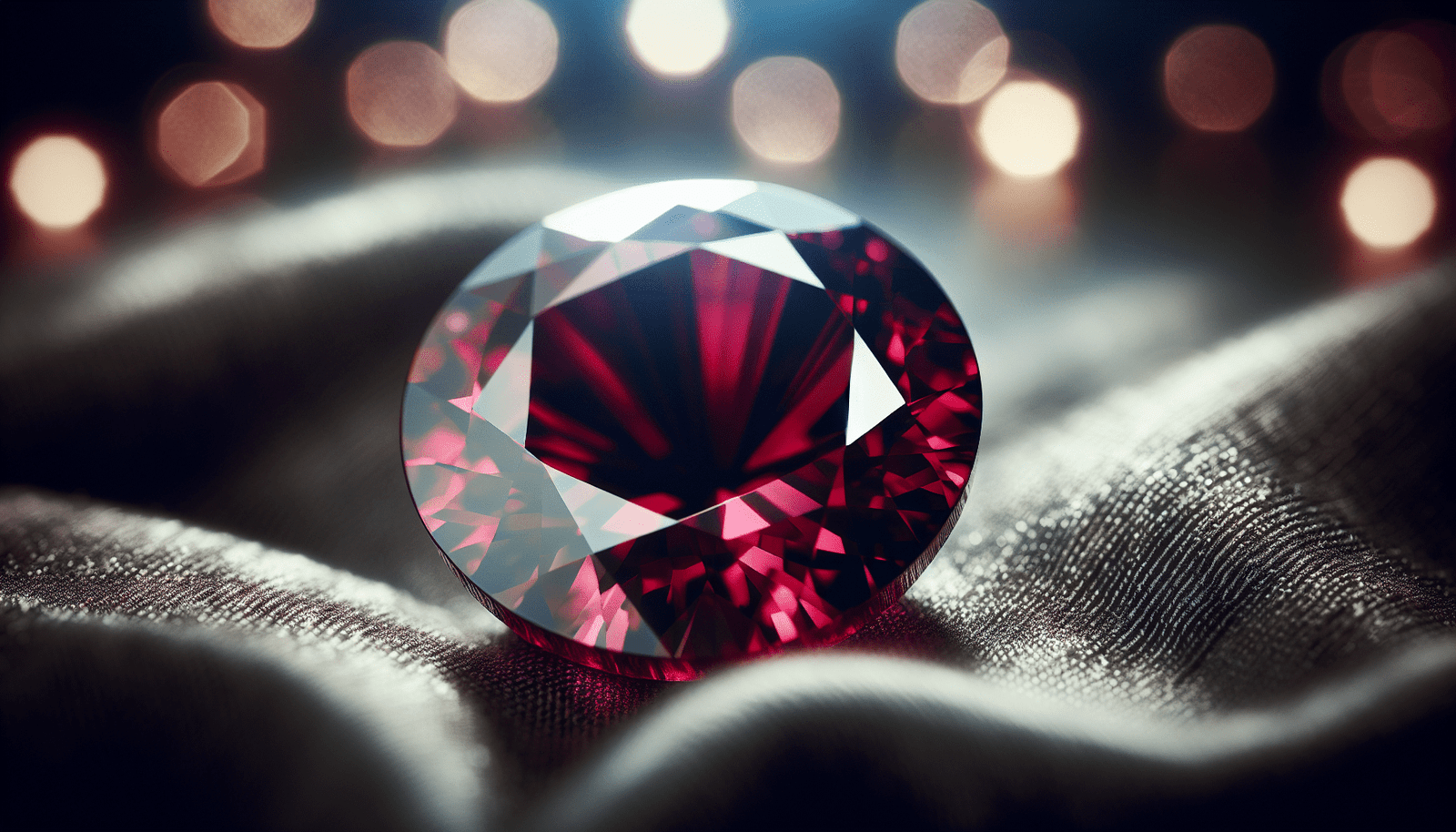Have you ever wondered why ruby, that stunning red gemstone, commands such high prices? The allure of ruby has captivated humans for centuries, but its value is not just about its vibrant color. Let’s take a closer look and explore the various factors that contribute to the cost of this precious gem.

The Historical Significance of Ruby
Rubies have been treasured throughout history, coveted by kings, queens, and emperors. Ancient civilizations such as those in India and Myanmar (formerly Burma) were particularly enchanted by this crimson stone. In Sanskrit, the word for ruby is “ratnaraj,” which translates to “king of precious stones.” This historical reverence has contributed to its modern-day value.
Medieval and Renaissance Fascination
In medieval Europe, rubies were associated with power and protection. They were often set into royal crowns, shields, and armor to signify wealth and ward off evil. During the Renaissance, their desirability only increased as they became a symbol of passion and pure love.
Eastern Mysticism
In the East, especially in Burma, rubies were seen as protective stones. They were believed to contain a flame so powerful that it would boil water and burn the hand of anyone who dared to hold it. These mystical properties have carried over into modern interpretations of the stone, further bolstering its value.
The Geological Rarity
One primary reason rubies are expensive lies in how they are formed. They are a variety of the mineral corundum, which is primarily made up of aluminum oxide. The red color of ruby comes from trace amounts of chromium. All of these elements must come together under specific conditions of heat and pressure for millions of years. Hence, finding gem-quality rubies is rare.
Specific Conditions
Rubies often form in marble. When magma meets limestone deposits, it creates marble and, under precise conditions, incredible heat and pressure trigger the growth of rubies. The conditions required are so specific and rare that ruby deposits are not found just anywhere, amplifying their scarcity.
Geographic Locations
Rubies are primarily mined in Myanmar, Thailand, Sri Lanka, and Madagascar. Of these locations, Myanmar is the most famous for producing top-quality rubies, particularly from the Mogok region. Burmese rubies are highly coveted and can significantly boost a ruby’s price due to their vivid, saturated color.
| Country | Mining Region | Quality |
|---|---|---|
| Myanmar | Mogok, Mong Hsu | Known for the finest ‘pigeon blood’ rubies |
| Thailand | Samiran Hills | Produces dark red and occasionally clear rubies |
| Sri Lanka | Ratnapura, Elahera | Offers a range of colors, generally lighter |
| Madagascar | Ilakaka, Vatomandry | Increasingly significant source, varied qualities |

The Process of Extraction and Cutting
Mining rubies is no simple task, and the extraction process can be dangerous and labor-intensive. Once mined, these gems must be carefully cut to maximize their brilliance and color.
Mining Challenges
Traditionally, ruby mining involved digging through rivers or alluvial deposits to find stones. Modern techniques involve shaft and tunnel mining, which requires significant investment for machinery and safety measures. This labor-intensive process increases the base cost of the raw material.
Cutting Expertise
Cutting a ruby requires a highly skilled gem cutter. The stone must be carefully shaped to ensure it catches the light effectively while enhancing its color. A poorly cut ruby can depreciate its value, making the expertise and precision of the gem cutter crucial. They must also be mindful of the ruby’s inclusions, which are natural imperfections that can impact its clarity and overall value.
The Four C’s: Color, Clarity, Cut, and Carat
When assessing the value of a ruby, the “Four C’s” – Color, Clarity, Cut, and Carat – play a crucial role. Each factor influences not only the beauty but also the price of the gemstone.
Color
The most valuable rubies are known for their “pigeon blood” red color, which is a deep red with a hint of blue. The intensity and uniformity of the color are paramount, and even minor differences can make a huge difference in price.
Clarity
Most rubies contain inclusions, or internal flaws, and the fewer there are, the more valuable the stone. However, some inclusions can actually enhance a ruby’s value by displaying phenomena such as asterism, which creates a star-like effect on the surface.
Cut
The cut of a ruby can influence its overall allure. A skilled cut can enhance the stone’s color and brilliance, making it more desirable. Poorly cut stones may appear less vibrant and are generally less valuable.
Carat
Rubies are often found in small sizes, and larger stones are rare. Hence, the price per carat increases exponentially with the size of the ruby.

Treatments and Enhancements
Many rubies undergo treatments to improve their color and clarity. While treated rubies can still be valuable, untreated rubies are often considered more desirable and, therefore, more expensive.
Heat Treatment
The most common treatment for rubies is heat treatment, which enhances their color and clarity. This practice is widely accepted in the gem industry, but it must be disclosed to buyers.
Lead Glass Filling
Some rubies undergo lead glass filling, which involves injecting lead glass into fractures within the stone to enhance its clarity. These treated stones are significantly less valuable than untreated or heat-treated rubies.
| Treatment Type | Purpose | Impact on Value |
|---|---|---|
| Heat Treatment | Enhances color and clarity | Moderate impact |
| Lead Glass Filling | Improves clarity | Significant reduction |
Market Demand and Socioeconomic Factors
The market demand for rubies is influenced by trends, economic conditions, and even geopolitical factors.
Trend and Fashion Influence
The demand for rubies can spike based on fashion trends and celebrity endorsements. When a famous personality is seen wearing ruby jewelry, it often leads to increased interest and demand, driving up prices.
Economic Conditions
Economic stability plays a role in the pricing of luxury goods, including rubies. When the economy is flourishing, people are more willing to invest in high-ticket items, including fine gemstones. Conversely, during economic downturns, the demand and price may drop.
Geopolitical Factors
Geopolitical stability in ruby-producing countries can also influence prices. Political instability or conflict in major mining regions, such as Myanmar, can disrupt supply chains, leading to shortages and increased prices.
Ethical and Sustainable Sourcing
With growing awareness around ethical sourcing, many consumers now prefer gems sourced in ways that are environmentally friendly and socially responsible.
Conflict-Free Certification
Rubies that come with a conflict-free certification ensure that the gem has been mined without funding armed conflict or human rights abuses. This certification can add to the gem’s value.
Sustainable Practices
Increasingly, companies and consumers are looking for rubies that have been mined using sustainable practices. Ethical mining methods strive to minimize environmental impact and ensure fair labor practices, which can elevate the price of the gemstone.
Investment Value
Rubies are not just ornamental; they are also considered excellent investments. With their ongoing rarity and high demand, rubies can appreciate in value over time, providing a good return on investment.
Diversifying Portfolio
For those looking to diversify their portfolio, investing in high-quality rubies can be a wise choice. Unlike paper money, which can devalue with inflation, rubies tend to retain their worth and can even appreciate over time.
Auction Records
High-quality rubies have fetched record prices at auctions, highlighting their investment potential. For example, the “Jubilee Ruby” sold for $14.2 million, illustrating just how valuable these gems can be.
Cultural and Personal Significance
Besides their financial worth, rubies hold cultural and personal significance for many people. They’re often associated with significant life events and milestones, making them more than just a pretty stone.
Birthstones and Zodiac
Ruby is the birthstone for July and holds astrological importance in various cultures. It is often given as a gift to mark anniversaries and other significant occasions, which can add sentimental value.
Symbolism of Love and Power
Throughout history, rubies have symbolized love, power, and passion. They make excellent gifts for romantic partners, signifying enduring love and passion. This symbolic value often adds to their cost as people are willing to pay more for a gem that holds deeper meaning.
Care and Maintenance
Given their rarity and cost, maintaining a ruby requires some effort to ensure its lasting beauty and value.
Proper Cleaning
Rubies should be cleaned using warm soapy water and a soft brush. Avoid abrasive cleaners or ultrasonic cleaners, as these can damage the stone or its settings.
Regular Inspections
Given the value of ruby jewelry, it’s wise to have them inspected regularly by a professional jeweler to ensure the setting remains secure and the gem stays in good condition.
Conclusion
So, why is ruby so expensive? The answer lies in a complex interplay of historical reverence, geological rarity, intricate extraction and cutting processes, the meticulous evaluation based on the Four C’s, treatments, market dynamics, ethical factors, investment potential, and cultural significance. Each of these elements adds layers of value, culminating in a gemstone that commands respect and high prices.
Remember, when you invest in a ruby, you are not just buying a beautiful stone. You are purchasing a piece of history, a marvel of nature, and, potentially, a valuable asset for the future.



